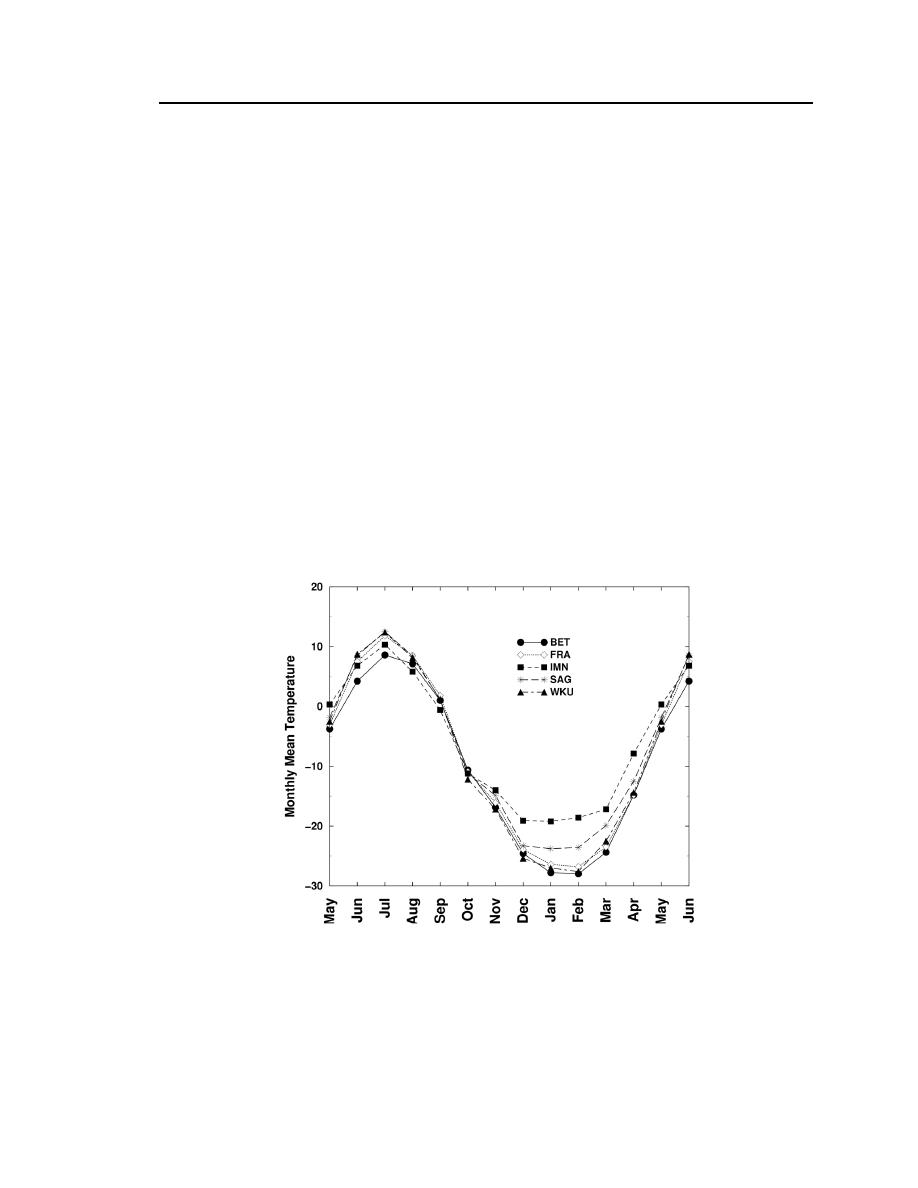
Surface Climate and SnowWeather Relationships of the Kuparuk Basin
11
solar forcing is the largest. The near-coastal site BET is an exception, with both
maximum and minimum daily temperatures lagging several degrees behind the
inland sites. The warmest temperatures at BET are found in late July into early
August, when the sea ice has typically retreated from the Beaufort Coast and
maximum temperatures and small diurnal temperature variations at IMN in July
and August are a consequence of its location in the foothills of the Brooks Range,
where, in addition to increased elevation, almost daily convective activity results
in cloud cover during much of the late-summer heating cycle.
Table 2 contains monthly mean, record maximum, and record minimum
temperatures for each month. (The record temperatures are, of course, the
extrema for only the five-year period considered here.) While not the warmest
location in terms of monthly means, FRA, located on the inland side of the
coastal plain, had the warmest July and August record temperatures by far. The
record minima also reveal that all locations also recorded sub-freezing
temperatures at least once during each month of WS.
Figure 4. Monthly mean temperatures for the five-year
period for each of the sites.



 Previous Page
Previous Page
